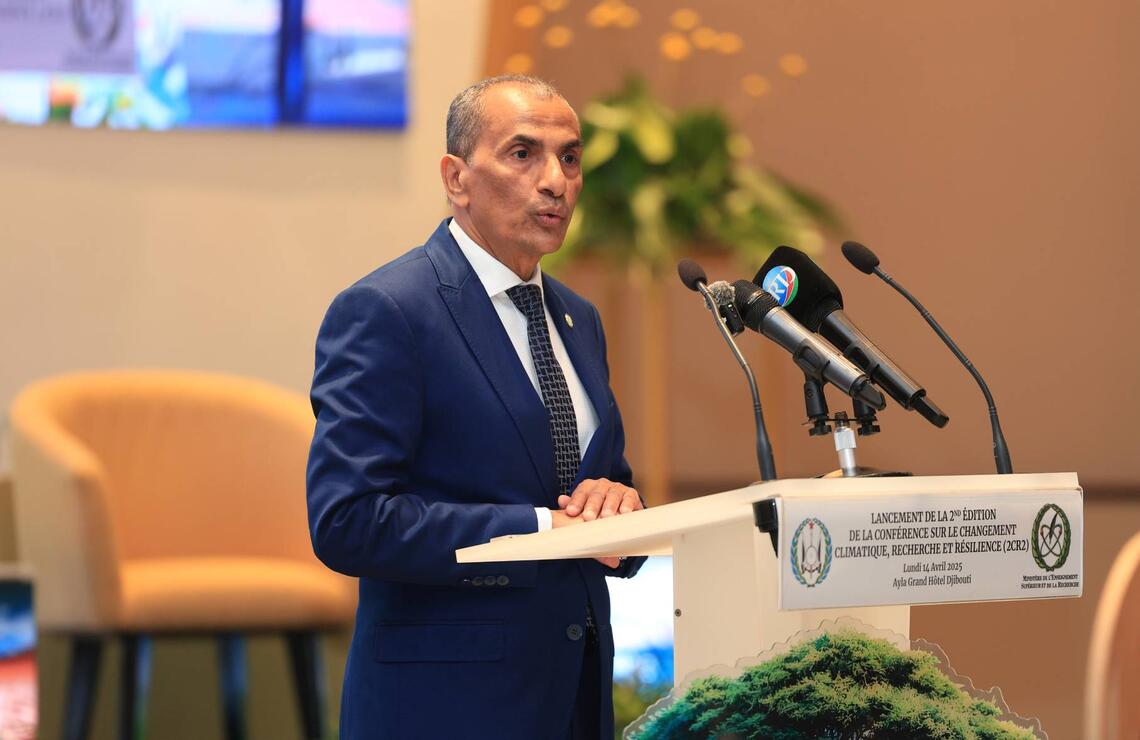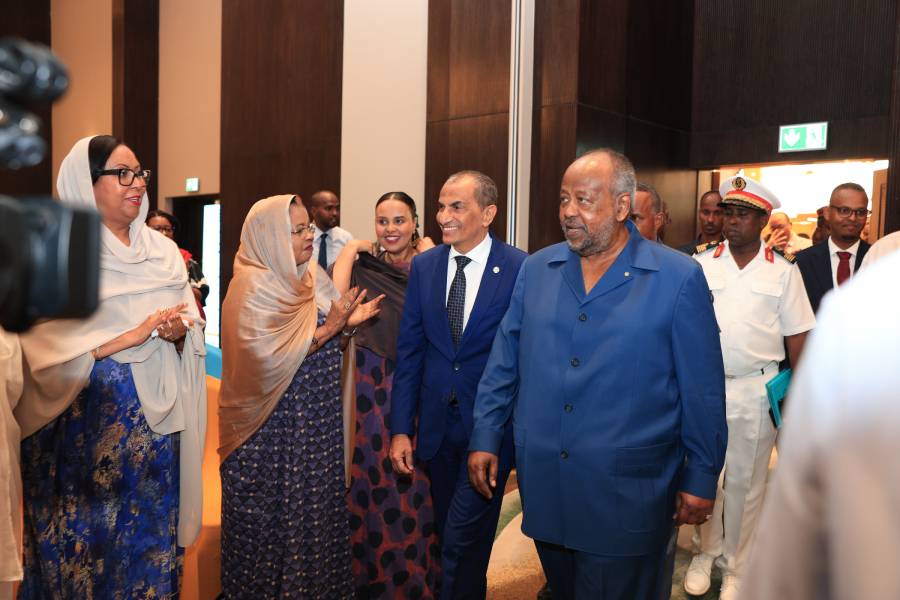
Nabil Mohamed Ahmed:
«Djibouti has successfully integrated climate resilience into all its plans»
Established in 2022, the Observatoire régional de la recherche et du climat (Regional Climate and Research Observatory - ORREC) works to anticipate droughts and support communities. From 14 to 16 April, the second annual international Climate Change Research and Resilience Conference (2CR2) was held in Djibouti. We spoke with Djibouti's Minister of Higher Education and Research about the conference and the stakes.
AM: What are the main issues highlighted by the conference?
Nabil Mohamed Ahmed: 2024 was the first year to exceed 1.5°C. The increase in greenhouse gases means that the climate continues to spiral out of control, with unprecedented heat waves causing droughts, fires and floods. Yet despite this, scepticism about climate change is gaining ground... The Ministry of Higher Education and Research, in support of President Ismaïl Omar Guelleh's climate initiative launched in October 2022, has therefore brought together political leaders, researchers, national, regional and international institutions and civil society stakeholders to take stock of the climate issue, evaluate programmes and advocate for a just and equitable transition. The aim is to strengthen regional scientific cooperation and promote resilience through innovative projects that prevent conflicts and ensure the sustainable management of natural resources.
ORREC, the Regional Research Observatory for the Environment and Climate, is a unique instrument in the region. What has it achieved in its first two years of operation?

ORREC has already achieved high-impact objectives. These include the accreditation of its laboratories by the International Atomic Energy Agency (IAEA); the development of a unique methodology for monitoring human and animal nutrition using nuclear technologies; the creation of a network of hydroclimatic monitoring stations for air, water and soil quality; the surveillance and monitoring of tropical cyclones; national capacity building through the training of 250 pupils and students and the supervision of eight doctoral theses; support for agropastoralists in farm and livestock management through the use of nuclear analysis and knowledge; the launch of a doctoral alliance at the sub-regional level (Ethiopia, Kenya, Somalia, Tanzania and Djibouti) and the creation of a regional database, ZAPIs; the use of artificial intelligence (AI) to develop a model for predicting the quality of groundwater in the transboundary aquifer; the establishment of an active collaboration programme with 12 regional institutions and five European institutions. And lastly, the development of a local dynamic model for predicting extreme events, on a scale of just three kilometres, where global models have a scale of 200 kilometres.
As President Guelleh emphasised during the conference, the key issue remains that of ‘climate justice’. What were your observations during the 2CR2 conference?
It was a rather bitter observation, because the commitment of $100 billion per year made by rich countries in Copenhagen in 2009 to support developing countries has not been honoured... The establishment of the Loss and Damage Fund at COP27 is still just a promise. Overall, countries in the Global South are struggling to access global climate finance.
With the arrival of a new climate-sceptic administration in the United States, how can a dynamic international agenda be maintained?
Climate change knows no borders. What is reassuring is that the vast majority of world leaders (European Union, African and Asian countries, etc.) do not share this sceptical position. Countries in the Global South and NGOs must unite around a climate justice agenda – as they do at various COPs – by defending a common and united position. The African Union (AU) could thus become the standard-bearer for climate justice, serving the continent.
President Guelleh emphasised the importance of ‘regional collaboration’.
Given the urgency of the situation, President Ismaïl Omar Guelleh's appeal is commendable. Joint actions bringing together and mobilising regional institutions, NGOs, civil society, scientists, etc. can change the game and raise awareness of the importance of working together and fully integrating climate resilience into conflict prevention and peacebuilding strategies. It is essential, for example, to support cooperation on transboundary water basin management to prevent water from becoming a source of division and instead turn it into a driver of cooperation.
Djibouti is on the front line of climate change. How would you describe this reality?
How are you fighting back at the national level? Our country is experiencing rising temperatures and increasingly frequent heat waves, causing recurrent droughts that exacerbate water stress due to low rainfall. All of this is putting real pressure on ecosystems and populations. Given this context, Djibouti has successfully integrated climate resilience into all of its development plans. We have been able to anticipate climate shocks by securing water resources at the national level (seawater desalination, rainwater harvesting, etc.) and at the regional level by financing a freshwater sharing project with Ethiopia. The country supports research to ensure the collection of reliable scientific data. To ensure food security, a project to develop oasis agriculture using innovative technologies is underway. This is a major step towards smarter, more sustainable and more resilient agriculture.
Djibouti has an ambitious goal for 2035: a 100% renewable energy mix and universal access to electricity.
This is the strategic objective. Djibouti has launched several initiatives to diversify its energy mix. The establishment of a 60 MW wind farm in Goubet (Tadjoura Bay) is a clear example of this commitment. In addition, a new 30 MW solar power plant will soon be added to the national grid, further boosting its renewable energy capacity. The country has also launched several geothermal exploration programmes, which offer significant potential. Plus, regional cooperation with Ethiopia provides access to hydroelectricity for 70% of its needs. Lastly, studies are underway to use tidal energy and green hydrogen.